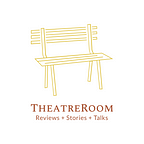Drop it into the letterbox! Artists in Bengaluru exchange notes on identity and prejudice old style
‘See-Saw’, a multi-sensorial experience spanning 10 weeks, rediscovers creation and communication via the postal medium
By Reema Gowalla
Slowness is said to be a thing of the analogue world. So, when almost everything in the arts went online during the pandemic, it was seen as a sign of notable transformation. But with it also came the fatigue of constantly speaking to a tiny black hole above the laptop screen, hoping the audience may privately respond to the performance. Alighting the digital frenzy and the countless possibilities it brings along, a group of artists in Bengaluru decided to rediscover what it takes to wait for an envelope to be dropped into the letterbox outside the house.
This multi-sensorial experience, however, isn’t just about the charms of the postman paddling to the neighbourhood. Instead, ‘See-Saw’ looks at how we engage with the idea of the ‘other’ involving a gamut of themes — identity, biases, assumptions, stereotypes and prejudices — via snail mail and the privilege of anonymity. Conceived and conceptualised by Karen D’Mello, this 10-week artistic exchange rethinks ‘creation and communication’ with the help of 12 artists from the city.
“The collective reflection of the anonymously paired artists on the topics given to them is the central part of this experimental project. Every week, each artist received a prompt by the core team. They then exchanged their work of artwork with their respective partner through the postal service or courier,” says Karen, explaining, “The physicality of the postal medium and the waiting involved in it enabled each participant to break free from the immediacy of the digital space and get deeply involved in the subject at hand to create art and communicate. The obscurity of identity also allowed the artists to be vulnerable and enjoy a sense of freedom when it comes to expressing their opinion on prejudices and stereotypes.”
Although the participants came from diverse practices, they were constantly encouraged to try out other forms and expressions. “There is a deliberate attempt to keep the findings and artistic responses relevant and belonging to the present times, and not being drifted away into an archival setup,” she adds. All the artists were referred to by quirky pseudonyms that included ‘Gulla’, ‘Haribo’, ‘Jeisi Amawasa’, ‘Khwabida’, ‘Lavender Hippo’, ‘Loki’, ‘Misfit Medusa’, ‘Morty Smith’, ‘Shams’, ‘Street Store Dolls’ and ‘Z’.
A website offering a deep-dive into everything that emerged from this ‘postal’ experiment, complete with reflections and insights from the team behind the project — including Charulatha Dasappa, Suchaita Tennetia and Aakriti Chandervanshi — is set to be launched on January 22. It comprises more than 80 artistic responses, notes and letters. The initiative is completed in collaboration with Sandbox Collective and is supported by Goethe-Institut/Max Mueller Bhavan Bangalore.
Why the name ‘See-Saw’? “The idea was to create a perspective beyond sight. We tried to build embodied experiences that one can engage with in the real, tangible world. The 10-week duration of the project paved the way for us to explore materiality, much like how things were before Covid-19 made everyone turn to their computer screens. A lot of thought went into crafting the prompts that corresponded across Bengaluru. The goal was to stimulate diverse thoughts and reflections within and outside the world of art,” says Charulatha.
According to a participant — who dabbles in poetry, photography and research work — ‘See-Saw’ encouraged her to express without worrying about how the other participant is going to react to her art. “Not knowing the audience was an advantage, I feel. Artists often tailor their work based on how the audience will respond to it. But here the anonymity gave us the freedom to go rogue and be brutally honest with what we share with the person on the other side. The guidelines and the prompts that followed were evocative, nuanced and thoughtfully devised,” says the artist. Her responses included digital art, a piece of music, flash fiction and a collection of vignettes.
